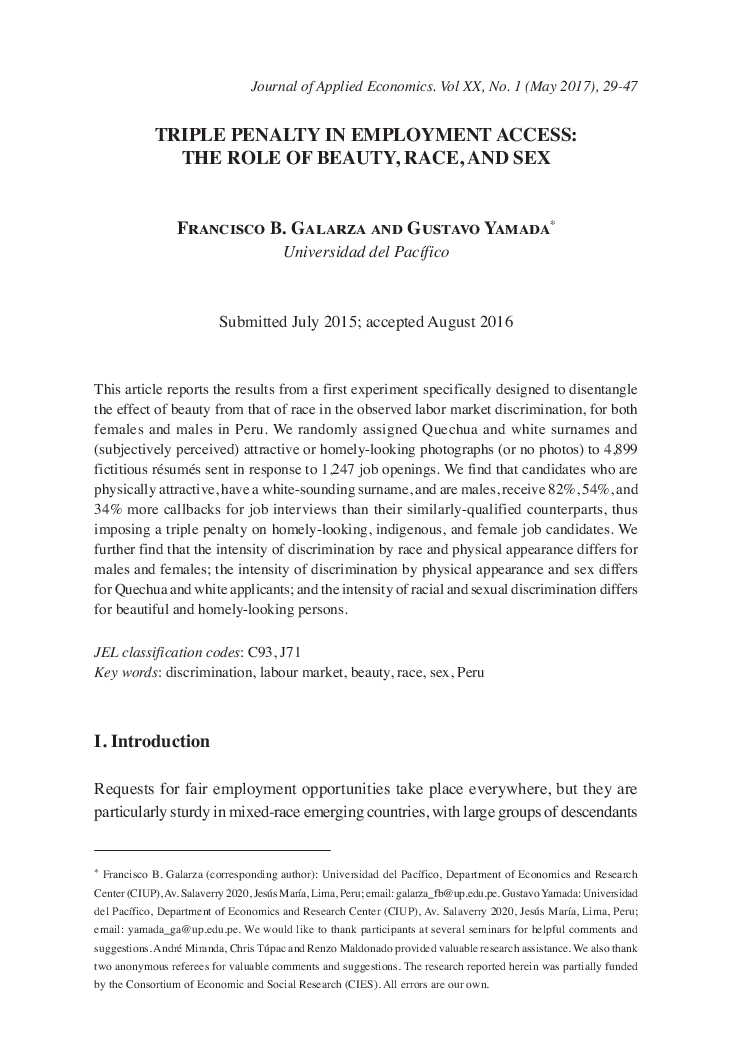| Article ID | Journal | Published Year | Pages | File Type |
|---|---|---|---|---|
| 7356104 | Journal of Applied Economics | 2017 | 19 Pages |
Abstract
This article reports the results from a first experiment specifically designed to disentangle the effect of beauty from that of race in the observed labor market discrimination, for both females and males in Peru. We randomly assigned Quechua and white surnames and (subjectively perceived) attractive or homely-looking photographs (or no photos) to 4,899 fictitious résumés sent in response to 1,247 job openings. We find that candidates who are physically attractive, have a white-sounding surname, and are males, receive 82%, 54%, and 34% more callbacks for job interviews than their similarly-qualified counterparts, thus imposing a triple penalty on homely-looking, indigenous, and female job candidates. We further find that the intensity of discrimination by race and physical appearance differs for males and females; the intensity of discrimination by physical appearance and sex differs for Quechua and white applicants; and the intensity of racial and sexual discrimination differs for beautiful and homely-looking persons.
Related Topics
Social Sciences and Humanities
Economics, Econometrics and Finance
Economics and Econometrics
Authors
Francisco B. Galarza, Gustavo Yamada,
